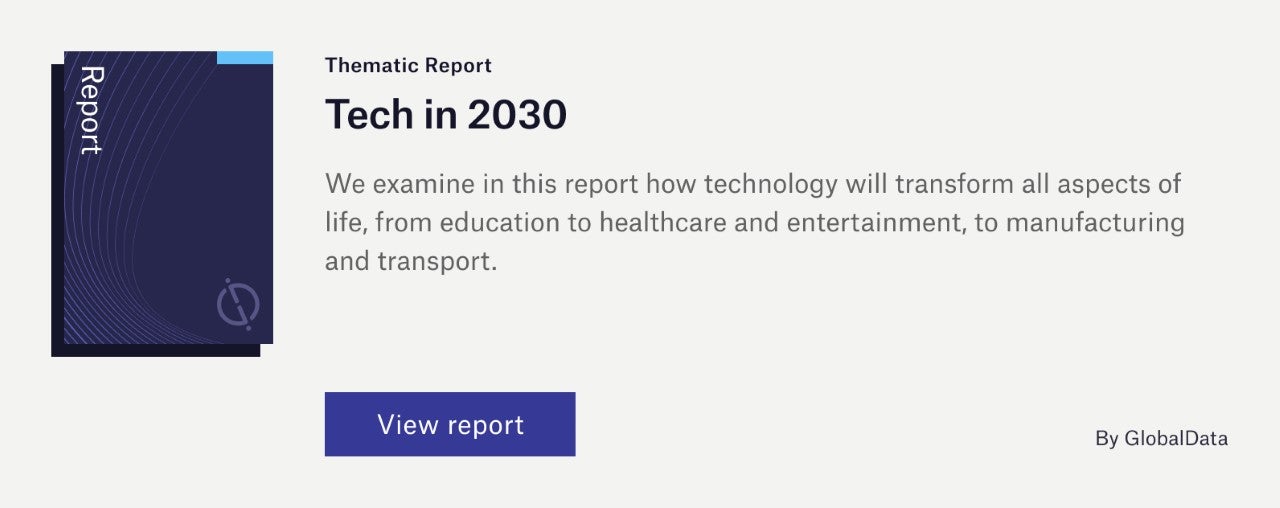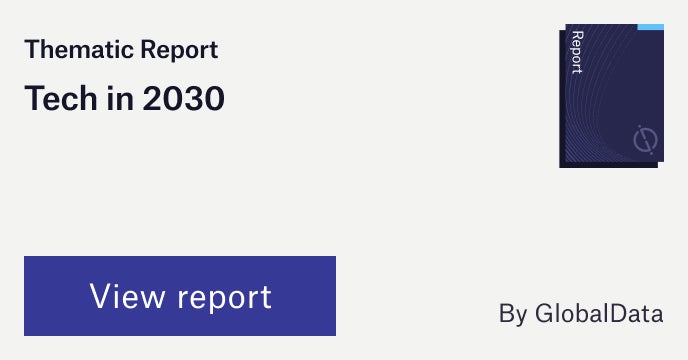The future of the information technology (IT) infrastructure industry will be shaped by a range of disruptive themes, with high-performance computing (HPC) being a significant theme that will have a meaningful impact throughout the industry. A detailed analysis of the theme, insights into the leading companies, and their thematic and valuation scorecards are included in GlobalData’s thematic research report,High Performance Computing (HPC) Market Size, Share and Trend Analysis by Region, Component (Server, Storage, Network, Software, Services, Cloud), Deployment, Application and Segment Forecast to 2026. Buy the report here.

Access deeper industry intelligence
Experience unmatched clarity with a single platform that combines unique data, AI, and human expertise.
IT infrastructures are made up of two core elements: hardware and software. Operating systems then connect between software applications and physical resources using networking components. IT services are an integral part of HPC cloud infrastructures.
Supercomputers have existed since the 1960s, but there has been renewed interest in high-performing machines in the last decade. Developments in artificial intelligence (AI) and the exponential growth in data mean that businesses need access to computers capable of performing complex workloads. Every day, businesses, governments, and individuals generate huge volumes of data. This data can only be a source of value if it can be stored, processed, and analysed, which requires powerful computing.
On the supply side, the ability to run high-performance computing (HPC) in the cloud has made the technology more readily available. Businesses no longer need to invest in the infrastructure required to build a local data centre to access HPC resources. HPC deployed at the edge, an emerging approach, has the potential to broaden HPC’s reach further still, as it brings HPC’s processing power closer to where the data is created. In the coming years and decades, breakthroughs in quantum computing may render what we currently recognise as high-performing computers obsolete. However, for now, HPC is still at the top of the data processing food chain.
However, not all companies are equal when it comes to their capabilities and investments in the key themes that matter most to their industry. Understanding how companies are positioned and ranked in the most important themes can be a key leading indicator of their future earnings potential and relative competitive position.
According to GlobalData’s thematic research report High-performance Computing, leading adopters of HPC infrastructures include: Microsoft, Amazon, Alphabet, Intel and HPE.
Insights from top ranked companies
Microsoft
Microsoft’s HPC strategy is built on three blocks: cloud computing, AI and sustainability. Microsoft launched Azure in 2010. The company has since become a leader in cloud services. The HPC services that it offers run on its Azure servers. The second block in Microsoft’s HPC business is AI. In February 2021, the company launched the Azure HPC & AI Collaboration Centers Program in partnership with Nvidia, AMD and Intel. The collaboration centres that it is setting up promise to offer low latency cloud, AI and HPC capabilities to universities and research centres worldwide. With the programme, the company hopes to demonstrate how Azure HPC and AI capabilities can foster innovation and increase productivity. The final block in Microsoft’s strategy is sustainability. Energy efficiency and weather modelling are the two use cases that Microsoft’s HPC business promotes most vigorously. In April 2021, Microsoft announced a collaboration with the UK Met Office to build a supercomputer that promises to rank among the top 25 most advanced machines. It will provide more accurate warnings of severe weather events and be one of the world’s most environmentally sustainable supercomputers, powered using 100% renewable energy.
Amazon
Amazon’s subsidiary Amazon Web Services (AWS) is a HPC cloud infrastructure provider. AWS launched in 2006, and the company’s Elastic Compute Cloud (EC2) platform started to become popular as a platform for HPC workloads in the early 2010s. The company did not pass up this opportunity to position itself as a player in the HPC cloud space. In 2016, AWS launched a fully-featured HPC environment on EC2. Today, it offers several different HPC services, including data management, networking, storage, automation, visualisation and security. AWS is a fast-growing business within Amazon and now represents 10% of the company’s annual revenue. AWS has built its own data centres and designs and makes its own data centre processor chips, reducing its dependencies on Intel and AMD.
Alphabet
Google launched its cloud computing services in 2008, two years after Amazon. Google still lags behind AWS in cloud services, but the company’s main strength lies in data analytics, an area of increased importance for HPC across all solutions, including the cloud. Google’s HPC-in-the-cloud package includes storage, networking, and computing. Whereas Amazon dominates the commercial segment, Google serves both commercial and research clients and counts several US universities and research laboratories among its clients. In the UK, it serves the University of York. On the commercial side, it counts HSBC among its clients. In March 2021, cloud provider Nimbix announced that it was partnering with Google to offer hybrid HPC solutions.
To further understand the key themes and technologies disrupting the technology industry, access GlobalData’s latest thematic research report on High-performance Computing.
- Nvidia
- Broadcom
- IBM
- Huawei
- Accton
- Oracle
- Fujitsu
- NEC
- Nutanix
- Lenovo
- F5 Networks
- Extreme Networks
- Alcatel-Lucent Enterprise
- Hitachi
- NetApp
- Adtran
- Inspur Electronic
- Western Digital
- Ubiquiti Networks
- Motorola Solutions
- Seagate
- Pure Storage
- Teradata
- Netgear
- CommScope
- Dawning
Data Insights
From

The gold standard of business intelligence.
Blending expert knowledge with cutting-edge technology, GlobalData’s unrivalled proprietary data will enable you to decode what’s happening in your market. You can make better informed decisions and gain a future-proof advantage over your competitors.









